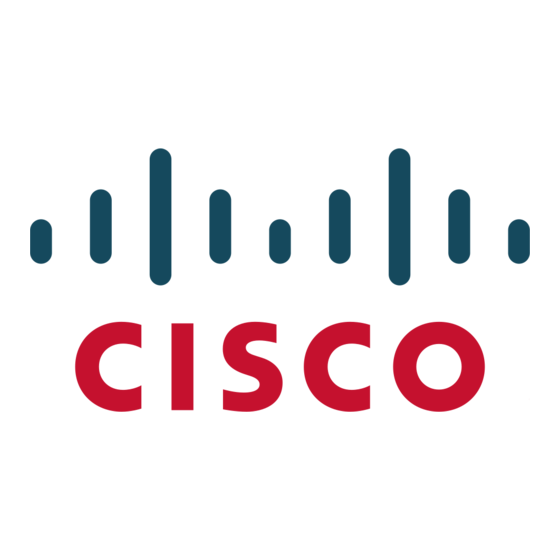Cisco 3560-48TS - Catalyst EMI Switch Brosur - Halaman 6
Jelajahi secara online atau unduh pdf Brosur untuk Beralih Cisco 3560-48TS - Catalyst EMI Switch. Cisco 3560-48TS - Catalyst EMI Switch 8 halaman. Cisco catalyst 3560-48ts: product brochure
Juga untuk Cisco 3560-48TS - Catalyst EMI Switch: Buletin Produk (5 halaman), Buletin Dukungan Produk (6 halaman), Spesifikasi (3 halaman), Buletin Dukungan Produk (4 halaman), Lembar data (23 halaman)

All contents are Copyright © 1992–2006, 2009 Cisco Systems, Inc. All rights reserved. This document is Cisco Public Information.
Cisco Fast EtherChannel
●
ports for up to 2 Gbps full duplex on network or server connections. Use Port Aggregation
Protocol (PAgP) for automatic configuration. Similarly, Link Aggregation Group Protocol
(LACP) allows creation of Ethernet channeling with devices that conform to IEEE 802.3ad
standard.
Internet Group Management Protocol (IGMP) facilitates monitoring and management of
●
multicast applications (such as e-learning and videoconferencing) while minimizing the
performance impact of managing group membership information.
IPv6
The Cisco Catalyst 3560 Series supports the IPv6 standard, which increases Internet global
●
address space to accommodate the rapidly increasing number of users and applications
that require unique global IP addresses.
In addition to the larger address space, the Cisco Catalyst 3560 Series switches also make
●
the most of other IPv6 features such as address autoconfiguration, embedded IP Security
(IPSec), routing optimized for mobile devices, and Duplicate Address Detection.
Advanced Quality of Service
Cisco Catalyst intelligent switches offer industry-leading QoS features to prioritize critical traffic
and applications thereby avoid bottlenecks. These features bring new levels of control,
predictability, and adaptability to networks of all sizes:
The Cisco Catalyst 3560 Series can identify traffic flows or traffic groups, and classify or
●
reclassify these groups using Differentiated Services Code Point (DSCP) in the IP packet
and the 802.1p class of service (CoS) field in the Ethernet packet.
Users can mitigate DoS attacks by assigning a minimal bandwidth queue to "scavenger
●
traffic" or unimportant traffic used for peer-to-peer media sharing, gaming, or any
entertainment video applications. This reduces scavenger traffic during periods of
congestion, but allows it to be available if bandwidth is not being used for business
purposes, for example during off-peak hours.
Rate limiting gives control over the amount of bandwidth across any configured interface,
●
for appropriate distribution of available bandwidth.
Four egress queues help network administrators to be more discriminating and specific in
●
assigning priorities for the various applications on the LAN. Scheduling is performed in
egress to assign the appropriate queues to the outgoing packets.
Shaped Round Robin (SRR) scheduling helps ensure differential prioritization of packet
●
flows by intelligently servicing the ingress queues and egress queues.
Weighted Tail Drop (WTD) provides congestion avoidance at the ingress and egress
●
queues before a disruption occurs.
64 policers per 10/100 or Gigabit Ethernet port used to allocate bandwidth based on
●
source/destination (IP address, MAC address) or TCP/UDP port numbers.
®
and Gigabit EtherChannel technology allows for aggregating
Brochure
Page 6 of 8
